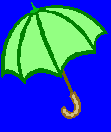
CRLS Research Guide
|
|
 |
Use of Information
Ask these questions:
What information does the source give me?
Does the information give you answers to your questions?Does the information give you new ideas, or lead you to other sources?
Is the information given in the types of formats you need (maps, dates, graphics, etc.)?
Can I understand the information?
Is it in a language you can understand?
Is it too scientific or technical?
Does it use too much specialized language that you don't understand?
If the language is not right for you, look for the same information in other sources. If you cannot find any, ask a librarian to help you. There is always information available for both experts and non- experts in most topics.
What information can I use?
1. Does the information included in the source help me complete my task?
If it does, then you will be able to start "extracting" the information. (see letter "C" next)
If it does not, you will need to look for information in other sources.
2. Does the information in the source give me additional ideas that make me want to change my original thesis?
If you find that there is much too much information on your topic, you may want to narrow down your topic (see appendix (?) -Focusing a Research Topic ).
If you are not finding enough material on your topic, you will want to go through the same process to broaden your topic (make it larger to include more material).
How will I get the information out of the source?
There are a number of ways to extract information out of a source, depending on the type of source and the equipment available to you. Here are some ways to do it:
|
Note-taking Photocopying Printing (from a computer source) Videotaping Tape recording |
Interviewing (and note taking or tape-recording) Photographing Scanning (requires a scanning device) Drawing or sketching
|
Warning!! You must give credit to the source of any information you use directly or paraphrase. This is called citing your sources. If you use in your final product any data, sentences, paragraphs, sounds, or images (pictures) without citing the source, you are committing an unlawful act called plagiarism,which means pretending someone else's work is your own. There are legal consequences for doing this. That is why it is very important to give credit to any material you use that is not originally your own. The best time to do this is when you are taking notes or copying information in any way. Make Source Cards for all sources you use. Identify on your notecard the source for any information you print out or copy from a computer source, photocopy from anything, scan electronically, or directly copy into your notes.
Does the information give me any other key words or phrases that I can use to lead me to other information?
Am I ready to start putting a draft of my project together?
1. Have you double-checked factual information in a couple of sources?
2. Have you collected all of the kinds of information you need (these may include any pictures, maps, data, etc.)?
3. Have you recorded the bibliographic information for any sources you used?
4. Do you have enough information to begin organizing it?
At this point it is best to make an outline to create a structure for your project.
Now you can see if you are missing any information, want to eliminate any information, or need to change your thesis or topic in any way.



